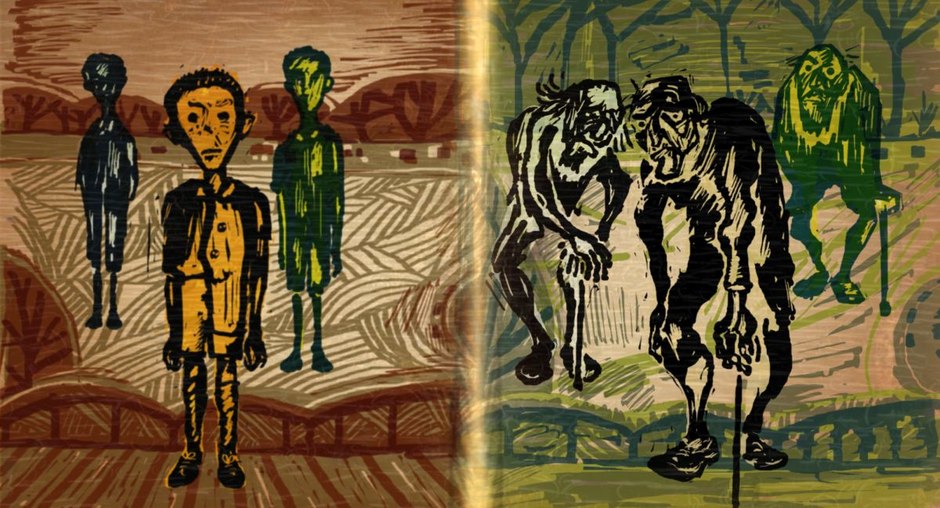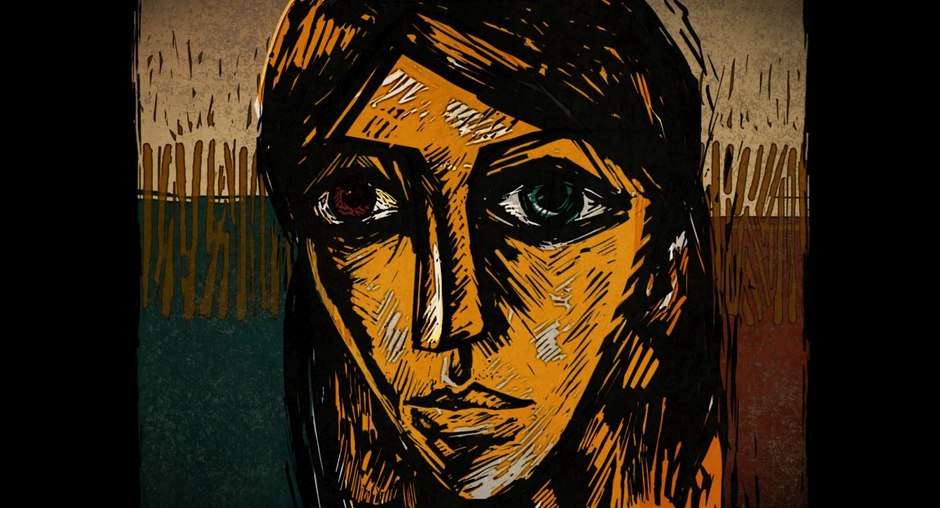Introduction
Expressionism supposes the emphasis on the feelings that can be depicted using non-traditional methods because the content is more important than the form in this artistic style. The animation “Blind Vaysha” by Theodore Ushev is an example of the German expressionist style that allows the audience to feel the tragedy and the pain the protagonist of the animation experiences. The form of depicting objects and protagonists is similar to the early 20th-century aesthetics typical for this modernist genre.
Discussion
The girl named Vaysha cannot see the present because her left eye sees the past, and her right eye sees the future. It does not allow her to live as an average person, and nothing can unite her sight. The choice of the expressionist style, including the colors and the forms used to illustrate the story, allows the director to emphasize the unique way Vaysha sees reality. The significant aesthetic concern of contemporary design reflected in expressionism is the inability to express all shades of emotions using the traditional form. Therefore, the use of alternative artistic expression methods typical for expressionism is a way to add meaning to the images.
Expressionism focuses on the subjective emotions that constitute the unique individual experience. It is possible to assume that the main idea of the animation “Blind Vaysha” by Theodore Ushev is to show the audience that people should not feel anxious because they do not know the future and should not be depressed because the past is gone. They should understand the present moment’s value because they can live in it and perceive it adequately. The way the blind girl Vaysha sees the life around her is a vivid illustration of this idea because this person is miserable, and she cannot live at all. The examples of the expressionists of the past emphasize the importance of catching the particular moment because the reality will differ in several minutes. The absence of the rigid form in the depictions of objects emphasizes this assumption. Ushev uses the same method of depicting reality to accent the constantly changing essence of all things.
At the same time, the changeability of the surrounding reality and the individual perception of life through feelings are expressed differently in Ushev’s work compared to the historical examples. The main issue is the format of the animated movie that allows the director to show the flow of emotions and sensations and the development of the character. Historical examples of the works created in the expressionist style are typically paintings that can only show one particular moment. In addition, expressionist painting shows reality through the eyes of the artist. The discussed animation by Theodore Ushev shows reality from the perspective of blind Vaysha, the movie’s protagonist.
Conclusion
Therefore, “Blind Vaysha” by Theodore Ushev is created according to the aesthetics of expressionism, which makes it similar to the historical paintings in this style. The director emphasizes the personal emotions the protagonist experiences and uses colors to represent the narrator’s mood, which is not typical for traditional painting. In addition, the forms and the images used in the animated movie have symbolic meaning in some instances and have a modernist form of depiction. However, there are also some differences between historical expressionism and the discussed animation. The main detail is the continuous narration in the animated movie and the point of view that differs from the artist.


Reference
Ushev, T., dir. (2016). Blind Vaysha. Asphalt Tango Records.